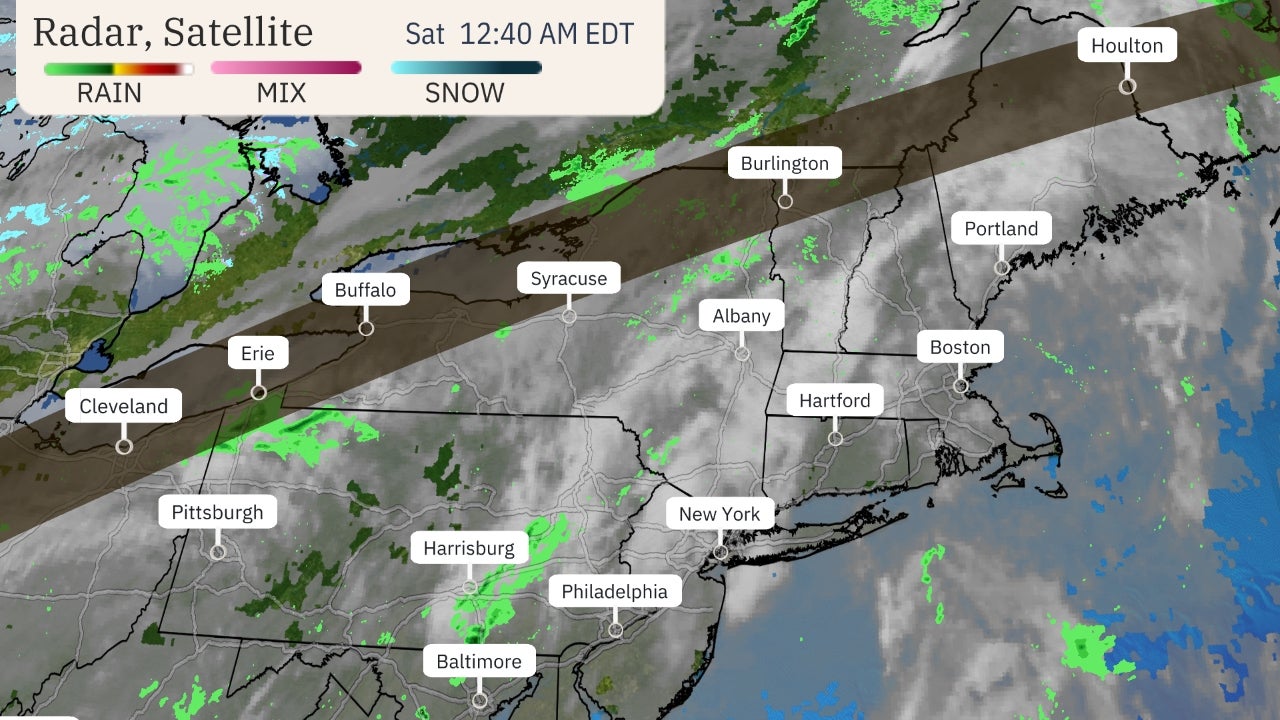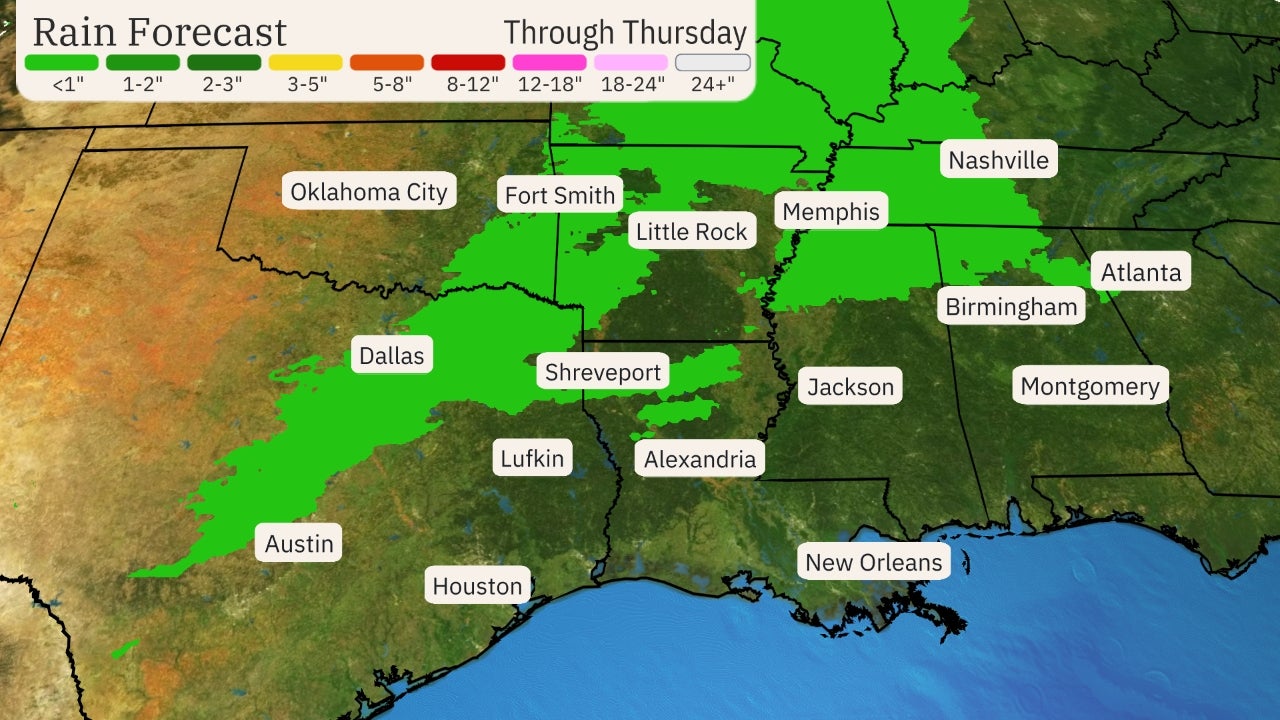Jonathan Erdman
Published: February 12, 2021
Winter Storm Uri is likely to blanket parts of the South with significant snow and some ice early next week before moving into the snow-fatigued Midwest and East.
This storm has been named Winter Storm Uri by The Weather Channel.
This winter storm will bring considerably worse weather conditions than what we saw early Thursday morning, which resulted in a pileup of more than 130 vehicles and at least six deaths.
Winter Storm Setup
A powerful southward plunge of the jet stream will pivot out of the southern Rockies across the South this weekend. Low pressure at the surface will track out of the Gulf of Mexico generally toward the northeast, wrapping moisture into the cold air.
Bitterly cold air in the Plains will only be reinforced this weekend smashing records as far south as the Rio Grande Valley.
This will produce snow and some ice much farther south than usual – and farther south than seen on Thursday. From there, this storm could then produce significant snow and ice in parts of the Midwest and East.

SPONSORED: Epic winter clearance sale at Sierra Trading Post
Winter Storm Alerts
The National Weather Service has issued winter storm watches and warnings for parts of the Southern Rockies, Southern Plains, and Ohio Valley beginning as early as Saturday.
A combination of blowing snow, gusty winds and bitterly cold temperatures across the Southern Plains could create conditions that will make it dangerous to be outside and to drive on.
 Winter Alerts
Winter AlertsLet's start by laying out the timing, then discuss in general terms how much snow may fall.
Forecast Timing
Uri will first bring more snow to the Pacific Northwest Friday night and Saturday, then in the Great Basin, Rockies and Four Corners Saturday into Sunday.
Sunday-Sunday Night
Snow will begin to spread into the central and southern Plains Saturday night and continue into Sunday.
Snow could become heavy at times during the day Sunday in the southern and central Plains from Kansas and Oklahoma into the Texas Panhandle and New Mexico. Accumulating snow may also reach as far east as western Missouri and Arkansas Sunday, including Dallas, Wichita and Oklahoma City, potentially leading to slippery, snow-covered roads.
Gusty winds up to 35 mph will create lower visibility conditions with frigid wind chills.
A wintry mix of snow, sleet and freezing rain is increasingly likely from San Antonio to Shreveport and Little Rock late in the day.
 Temperature, Wind Gust and Conditions Timing
Temperature, Wind Gust and Conditions TimingSunday night, snow will expand south and east across the Mississippi and Ohio Valleys, including Dallas-Ft. Worth, St. Louis and Indianapolis.
A band of sleet and freezing rain will fall on the southern and eastern end of the precipitation Sunday into Sunday night in southern Texas into Louisiana and the lower-Mississippi and Tennessee valleys, including Houston and Nashville. This mix may fall as far south as Deep South Texas.
 Sunday Night's Forecast
Sunday Night's ForecastMonday
Snow, possibly heavy, may fall Monday from eastern Texas into parts of northern Louisiana, Arkansas, and the mid-Mississippi and Ohio Valleys. Some snowfall or ice could expand as far east as the mid-Atlantic and interior Northeast.
Freezing rain and sleet may occur just to the east of the area of snow from southeast Texas and Louisiana to the Tennessee Valley and the piedmont of Virginia.
By Monday night, this mess of heavy snow, freezing rain and sleet may spread across much of the Northeast and mid-Atlantic, while continuing from the Ohio Valley southward into the Tennessee and mid-Mississippi valleys.
 Monday's Forecast
Monday's ForecastTuesday
Typical of winter storm forecasts this far out in time, computer forecast models are not in sync on all the details regarding Tuesday's forecast.
For now, most of the forecast models we examine suggest most of the wintry precipitation in the South should be largely over with by Tuesday, with the storm taking aim on parts of the Great Lakes and Northeast. Much of the I-95 corridor may see a rain/snow mix.
(MORE: Why Forecasts for Winter Storms are Typically Uncertain Many Days Out)
 Tuesday's Forecast
Tuesday's ForecastHow Much Snow?
Given the wealth of cold air in place mentioned earlier, many locations that are typically on the border of snow vs. rain will be solidly snow with this storm.
This includes places like Dallas-Ft. Worth, which could easily pick up several inches of snow. This will likely be the first snowfall at Dallas-Ft. Worth International Airport with an inch or more of snow, since early March 2015.
Accumulating snow is also of higher confidence in Austin, Texas; Shreveport, Louisiana; and Memphis, Tennessee.
In fact, some light accumulations are even possible as far south as San Antonio, Houston and Jackson, Mississippi. The last time measurable snow fell at Houston's Hobby Airport was Dec. 7-8, 2017.
Heavier snow accumulations are most likely from Oklahoma and the Texas Panhandle into parts of New Mexico. It's been 10 years since Oklahoma City's Will Rogers Airport had at least a 6-inch two-day snowstorm, which was the infamous Groundhog 2011 Plains to Great Lakes blizzard.
Some heavier snowfall may also occur in the lower-Mississippi and Ohio valleys.
 Snow Forecast
Snow ForecastThere is also a threat of accumulating ice from parts of central and southeast Texas into Louisiana, Mississippi, northern and western Alabama, Tennessee, Kentucky, then into parts of the Ohio Valley and East.
A glaze of ice is possible as far south as the Texas Coast, including Houston and Corpus Christi.
A significant icing is possible in parts of Virginia, with more than a quarter-inch of ice possible.

And if this all isn't enough, a second snow and ice event is possible around the middle of next week in parts of South, possibly in areas hit by this first storm.
(MAPS: 7-Day U.S. Rain/Snow Forecasts)
Those with any travel plans in the southern Plains and Mid-South regions early next week may want to either have alternate plans or cancel those plans, as roads across this region will likely become dangerous, if not impassable, if this forecast holds.
If travel must be done this weekend into early next weekend, be prepared for frigid temperatures and a lack of heat in the case of car issues. Pack a kit with blankets, hand warmers and hats to keep you warm.
Check back to weather.com for updates and potential changes as key details become clearer in the coming days.
The Weather Company’s primary journalistic mission is to report on breaking weather news, the environment and the importance of science to our lives. This story does not necessarily represent the position of our parent company, IBM.
The Weather Company’s primary journalistic mission is to report on breaking weather news, the environment and the importance of science to our lives. This story does not necessarily represent the position of our parent company, IBM.

No comments:
Post a Comment